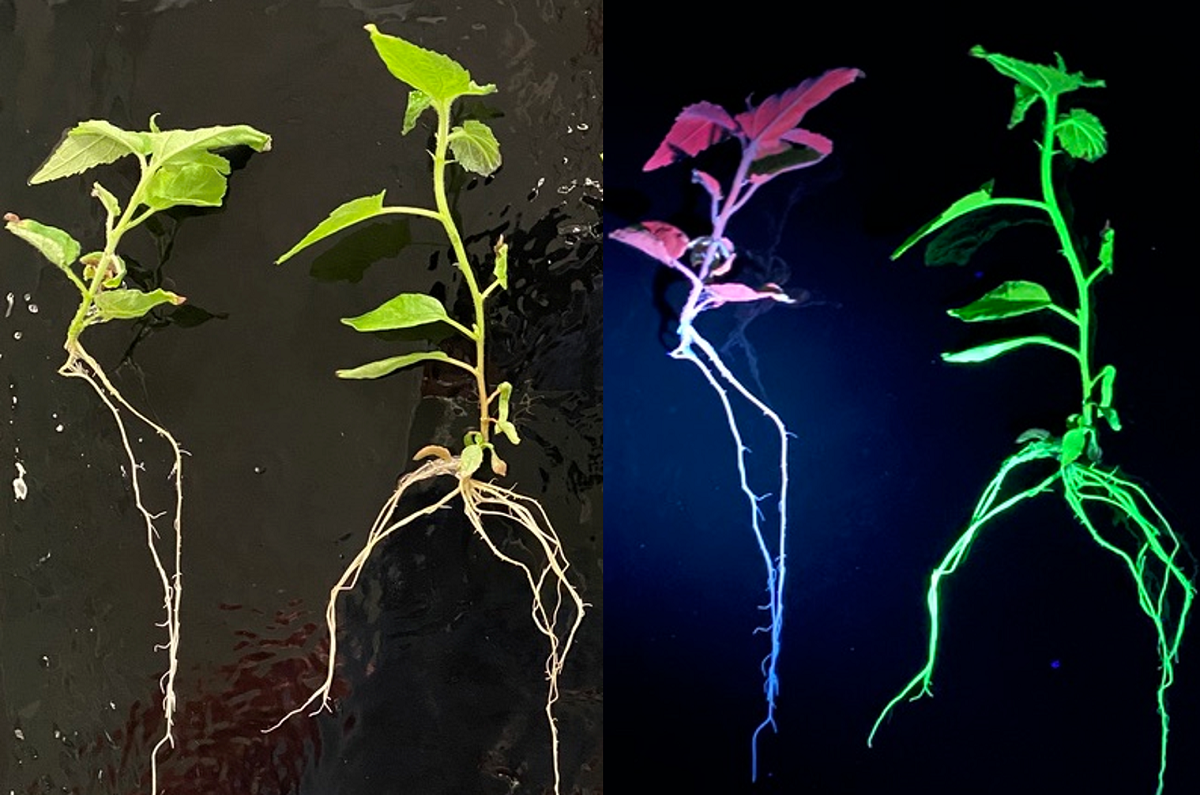
CRISPR Glows Up With Biosensor Detectors
December 15, 2021| |
A new method developed by American scientists now allows the real-time detection of gene editing tools in plants, and possibly in animals, bacteria and fungi in the future, with just an ultraviolet flashlight and the naked eye.
The researchers of the Oak Ridge National Laboratory of the United States Department of Energy described their method like an alarm system with two components: a biosensor guide RNA that redirects CRISPR activity, and a reporter protein that flags the activity. The biosensor guide RNA intercepts and prevents CRISPR from connecting with its original gene target. The biosensor then redirects CRISPR to a specific DNA sequence that encodes for a nonfunctioning green fluorescent protein (GFP). When CRISPR edits the sequence, it flips a switch that produces the GFP resulting to a green glow that signifies CRISPR's presence. This was later on improved by the scientists by replacing the GFP with eYGFPuv, a similar reporter protein but is visible under black light, a common ultraviolet light. This allows researchers to proactively observe CRISPR activities in real-time.
Prior to the new method, the only way to identify if genome editing occurred is through forensic analysis which requires a researcher to know what the genome looked like before it was edited. Now, the biosensor method allows researchers to quickly identify positive transformants with the desired target genetic changes and also easily see variants versus those where modification did not occur. It is also an effective method to know whether CRISPR is still active after the desired modifications have taken effect.
The scientists have created specific biosensors to detect various CRISPR tools such as Cas9 nuclease, prime editor, base editor and CRISPRa. They plan to optimize the sensors to improve the security of next-generation biotechnologies.
Read the news release from the Oak Ridge National Laboratory and the scientific publication in Horticulture Research to know more.
| |
You might also like:
- GE Potato Plant Responds to Stress by Glowing
- Brightest Engineered Plants Glow Throughout Life Cycle
- GM Tomatoes Give Fish a Pinkish Glow
Biotech Updates is a weekly newsletter of ISAAA, a not-for-profit organization. It is distributed for free to over 22,000 subscribers worldwide to inform them about the key developments in biosciences, especially in biotechnology. Your support will help us in our mission to feed the world with knowledge. You can help by donating as little as $10.
-
See more articles:
-
News from Around the World
- Researchers Find High Yields with Small Environmental Impact Possible for Rice
- ISAAA Launches Brief 56 - Breaking Barriers with Breeding: A Primer on New Breeding Innovations for Food Security
- Report Presents Africa's Growing Hunger Crisis
- Nigeria and Partners Launch Bt Cowpea Nutrition Outreach
- Report Highlights Biotech Updates and New Technologies in Brazil
- EFSA Releases Scientific Opinion on Three-Event Stack GM Maize NK603 × T25 × DAS-40278-9
-
Research Highlights
- Rice Gene OsNAC5 Contributes to Drought Tolerance Through Lignin Buildup in Roots
- Key Mechanism of C4 Photosynthesis Now Explained
-
Plant
- CRISPR Glows Up With Biosensor Detectors
- US University Sends Cotton to Space to Explore Potentials of Somatic Embryogenesis in Genome Editing
- CRISPR Experts Introduce Twin Prime Editing
-
Health
- Researchers in Japan Invent Mask that Glows When Exposed to Coronavirus
-
Read the latest: - Biotech Updates (December 17, 2025)
- Gene Editing Supplement (December 17, 2025)
- Gene Drive Supplement (February 22, 2023)
-
Subscribe to BU: - Share
- Tweet

